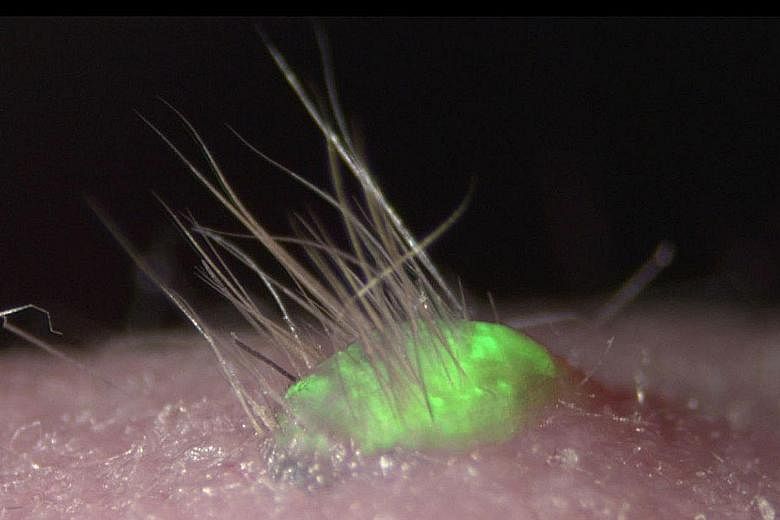TOKYO • Researchers in Japan have grown complex skin tissue that was transplanted on mice, the BBC reported yesterday.
The lab-grown skin has more of the organ's working parts in place than ever before. The breakthrough raises hope that normal skin could be grown in the future from the cells of burns victims and transplanted back on to them.
Starting with stem cells made from a mouse's gums, the scientists crafted the artificial skin with multiple layers. The skin has hair follicles and sweat glands similar to normal skin. When implanted into a "nude mouse" with a suppressed immune system, the skin integrated well and sprouted hairs.
The researchers say the achievements today will take about five to 10 years to translate into humans.
Prior to the new study, the scientists had developed a more basic type of skin substitute. This was used successfully in human patients, said Mr Takashi Tsuji, a team leader at Riken Center for Developmental Biology in Japan, reported the LiveScience website.
But this skin substitute had only one or two layers of tissue, and did not grow hair follicles or have glands to secrete sweat and oil called sebum, he added.
In the new research, LiveScience reported, scientists managed to generate skin that have these features. And the skin has three layers of tissue like normal skin.
Being able to grow human skin in the future and transplanting it on to burns victims would be vastly superior to the culturing and grafting techniques that are currently available, the BBC reported.
The current technique produces skin without many of the the biological components and functionality that we are used to. The new technique could also be adapted to manufacture realistic skin samples that drug or cosmetics companies could use to test their products - instead of using animals.
The findings, reported in the journal Science Advances, have been greeted with enthusiasm by other scientists working in this field, the BBC said.
Mr Tsuji, the paper's senior author, said the dream of regrowing personalised organs was beginning to materialise.
"Up until now, artificial skin development has been hampered by the fact that the skin lacked the important organs, such as hair follicles and exocrine glands, which allow the skin to play its important role in regulation," he said.
"With this new technique, we have successfully grown skin that replicates the function of normal tissue."

